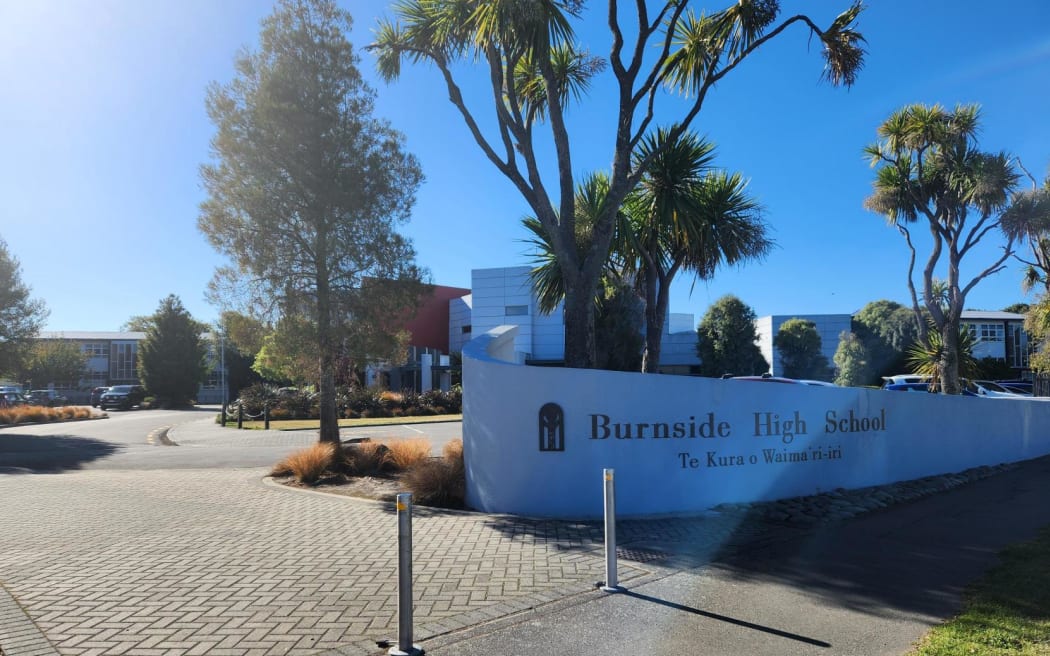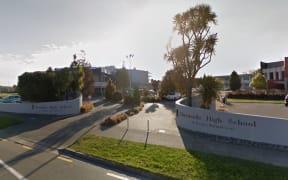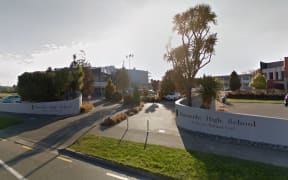
Burnside High School Photo: RNZ / Anna Sargent
About 40 school buildings nationwide are officially 'earthquake-prone', it has been revealed.
It comes after Christchurch's Burnside High School announced on Wednesday it would be closed to students for the rest of the week after finding two of its classroom blocks do not meet earthquake standards.
The school's principal Scott Haines said the blocks contain nearly a quarter of its classrooms and the closure was to allow time to reconfigure new timetables and teaching locations before it reopened on Monday.
Ministry of Education (MOE) head of property Sam Fowler said about 40 buildings at schools around the country rated below 34 percent of new building standards (NBS).
Earthquake-prone is an official classification of buildings under 34 percent of NBS.
Fowler told Morning Report the issue was not unique to schools and they were working with affected schools to "determine the right response".
Each school had its own circumstances and would need to make its own decisions, he said.
"There will be other classrooms around the country that have low ratings that are in use.
"Generally I'd expect boards and communities to be aware, there may be some circumstances where we're still working through."
Fowler said Burnside's buildings were 15 percent of NBS but the risk was low and they could have remained in use.
"Ultimately that's the board's decision, they are they ones who have to balance that risk.
"We'll be supporting them in what will be challenging circumstances over coming weeks."
'Robust' conversations on Burnside buildings
Burnside High School Board of Trustees deputy chair Chris Wallace told Morning Report they considered all the options, including students remaining in the low-rated blocks.
"It was a pretty complex situation and we've had some pretty robust discussions around board table to come to the decision we have."
Wallace, who was also the chair of Burnside's property committee, said the board understood the disruption to staff and students, but it was temporary.
For the last three weeks of term one older year levels would take turns having study at home days.
In term two a revised timetable would stagger junior and senior students. And by term three a new classroom block currently under construction would be completed.
"We'll get back to business as normal," said Wallace.
Secondary Principals' Association president Vaughan Couillault said principals wanted the MOE to provide more urgent help and solutions to problems with school buildings.
He said giving schools guidance but then leaving them to make decisions was not good enough.
"The thing that bothers many of us is the complete absence of a plan to help address that, given that schools don't own the buildings, the Crown does. So if we know that these buildings are in a particular state, I just simply don't think it's good enough to go 'oh well it's up to schools to make that call'," Couillault said.
Principals were not experts in terms of the seismic stability of a building, Couillault said.
"Yes we get advice and guidance, but the building is either safe or it isn't. It's pretty binary when you're talking about the parents of students going to any particular school - it's 'is my child going to be safe when they go to school?'
"So advice and guidance is one thing but taking ownership and creating solutions is another. And it's the solution creation for buildings that principals don't own that we find very very challenging."




